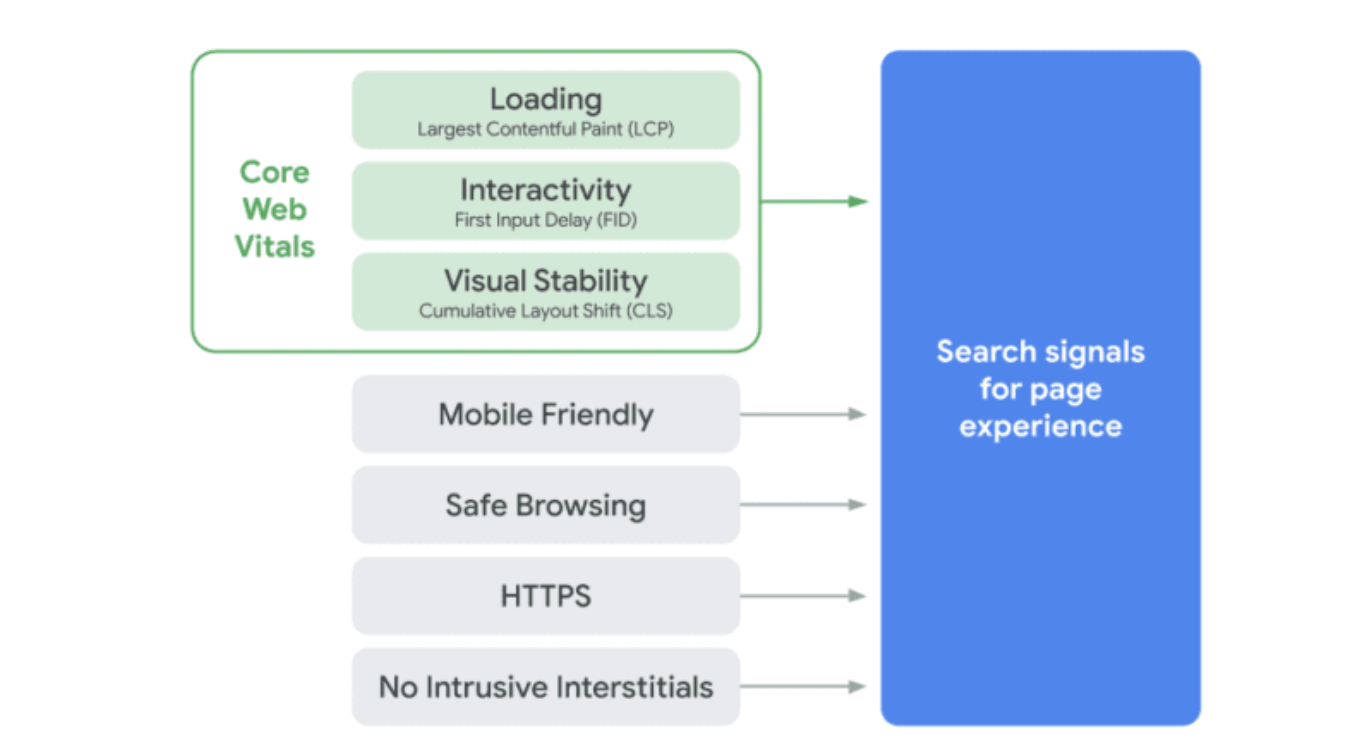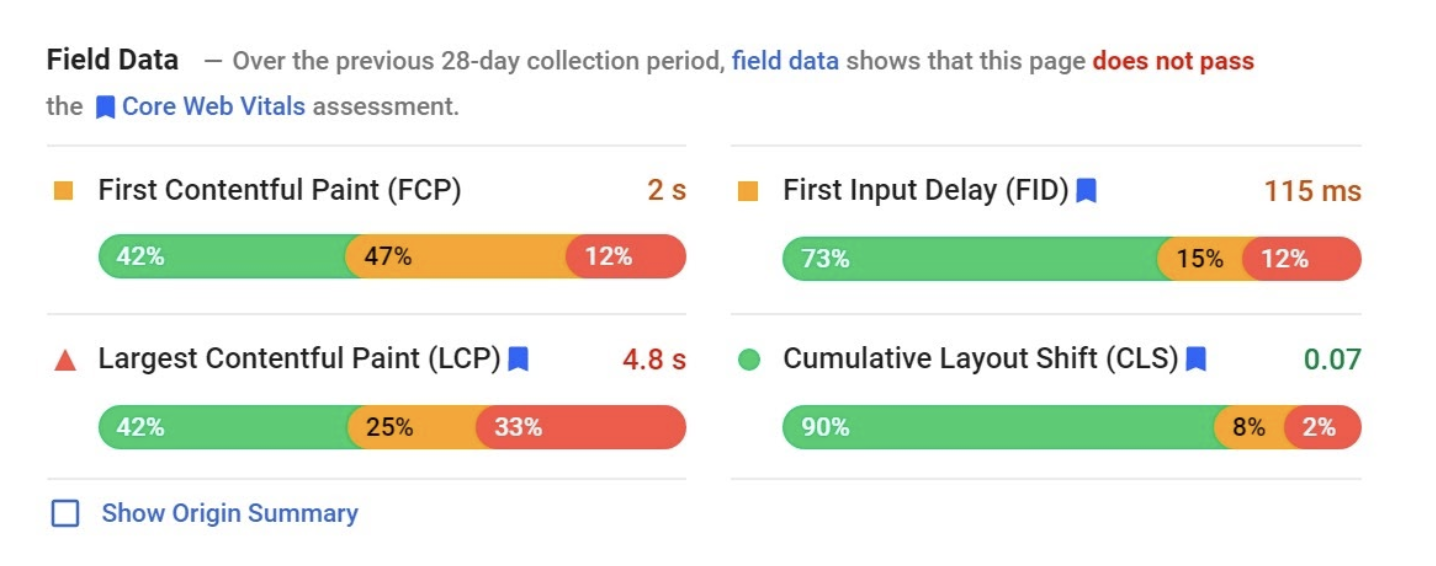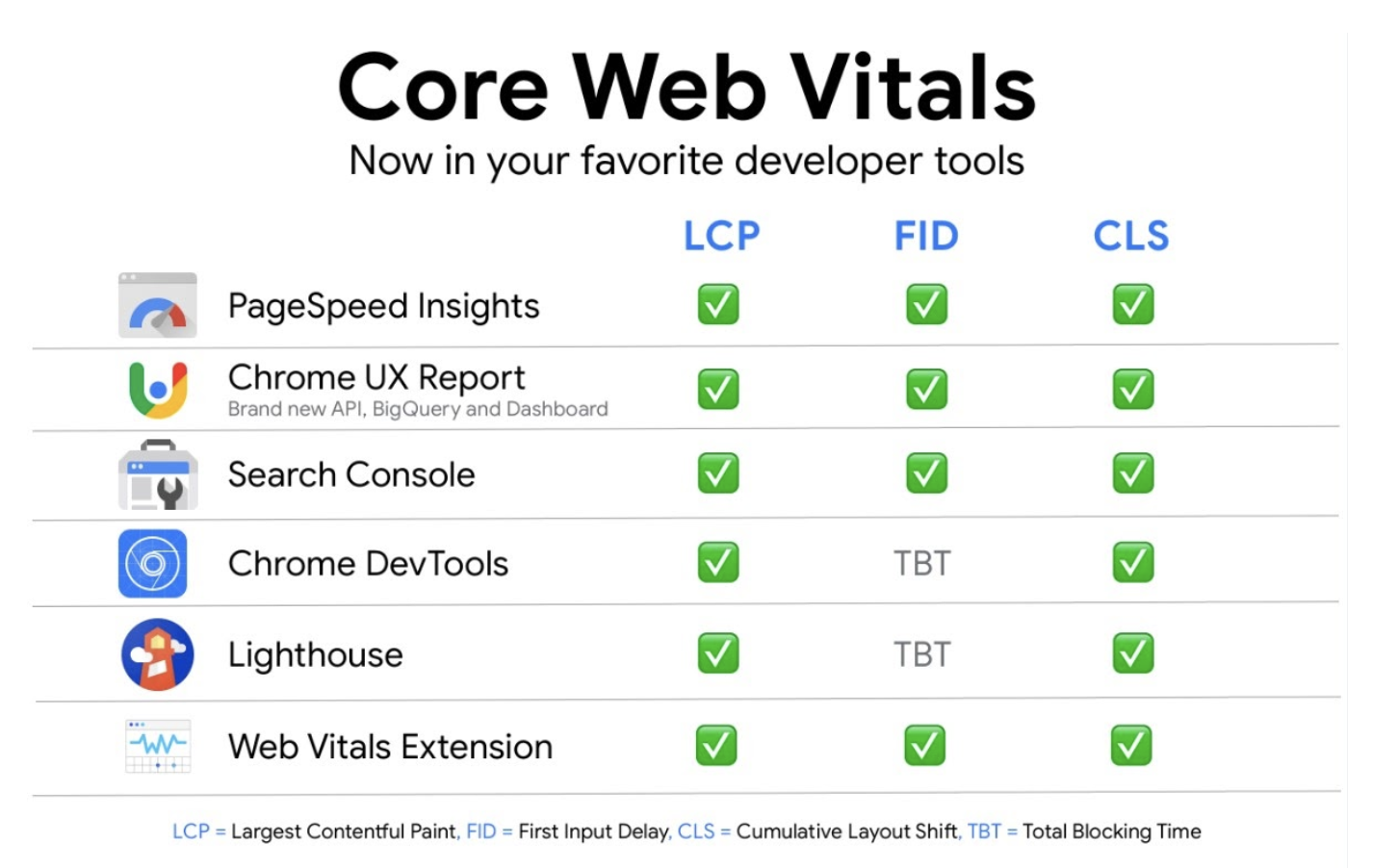Just when you thought you had a grip on your SEO skills, Google is back at it with a new search algorithm update to be rolled out sometime in 2021.
The algorithm tweak is aptly named ‘The Google Page Experience’ Update and will help the search engine rank websites based on new Core Web Vital report data as well as additional metrics.
This upcoming update continues on with Google’s core mission of providing users their information as fast possible with the least amount of effort. Luckily, the search engine is giving SEO’s and webmasters upfront notice to provide time for tweaks and optimizations before it is fully rolled out.
Continue reading to learn more about the Google Page Experience Update and how to prep your website for the rollout.
What is the Google Page Experience Update

According to Google:
“The page experience signal measures aspects of how users perceive the experience of interacting with a web page. Optimizing for these factors makes the web more delightful for users across all web browsers and surfaces, and helps sites evolve towards user expectations on mobile. We believe this will contribute to business success on the web as users grow more engaged and can transact with less friction.”
In simple terms, Google will utilize critical web usability metrics in order to rank pages when the content on competing pages is similar.
More specifically, these ranking factors will build upon existing ranking signals like mobile-friendliness, safe browsing, HTTPS, and intrusive interstitial guidelines.
Google hopes these ranking factors will help create a better user experience across the web by encouraging sites to eliminate pain points, increase mobile-friendliness, and increase overall user engagement.

What Are Core Web Vitals?
In May of 2020, Google released its core web vitals for evaluating website performance. These core metrics take into account the three following factors but will evolve over time.
Largest Contentful Paint (LCP)
Larget Contentful Paint (LCP) also known as loading performance is a user-centric metric that measures perceived load speed. More specifically, LCP measures the time it takes for the main content on a webpage to load. An LCP load time of up to 2.5 seconds is considered a good timeframe by Google’s standards.
First Input Delay (FID)
First Input Delay is another user-centric metric that measures load responsiveness or the amount of time that passes between the first user interaction on a page and the browser response. In the eyes of Google, an FID of up to 100 milliseconds is considered good, while anything up to 300 milliseconds needs improvement, and time beyond 300 milliseconds is seen as very poor.
Cumulative Layout Shift (CLS)
Cumulative Layout Shift measures the visual stability of your website or simply how much page elements move as your site loads. Google recommends that you reduce the number of times elements jump around the page to a CLS score of less than 0.1.
How Big of an Update Will Google Page Experience Be?
The Google Page Experience Update is something every business interested in SEO should keep in mind heading into 2021. With that being said, it is still only one of many ranking factors that Google takes into account. You can think of page experience as more of a tie-breaker when your content is similar to another web page.
In the past, major Google algorithm updates like Panda and BERT initially impacted around 10% of all search queries. We won’t know the true extent the new ranking factors will have until they’re completely rolled out in 2021, but many believe it can have a big impact on SEO strategy moving forward.
According to Bjoern Darko of Search Metrics,
“Now everything that constitutes a great website – great content, link quality, optimal UX, security, technical functionality, mobile usability, etc. – needs to be overseen and managed by an SEO, which would require fundamental changes in SEOs’ job requirements in current and future roles.”
How Can You Optimize Your Website for Google Page Experience?

If your site is already up to date on existing ranking factors like HTTPS, optimized code, and mobile-friendliness you can focus on the new Core Web Vitals outlined above.
With the introduction of these new vitals, Google updated its developer tools to help you better understand how your site is scored. You can access these insights in the Chrome User Experience Report within the Page Speed Insights tool as well as Google Search Console.
A well-versed SEO expert should be able to quickly assess any website and make the necessary tweaks to keep up with Google’s ever-evolving ranking factors. Keep in mind however that no amount of technical SEO tweaking can make up for quality content, which remains the strongest website ranking factor.
Don’t Aim for Perfection
It’s also important to note that while Google places high standards on websites, even the best domains aren’t perfect.
Instead of maintaining perfect scores on your web vitals, we suggest looking at your competitors to gauge your performance against theirs. To save time and energy, you can begin by auditing your most important pages first and moving on from there.
If you’re looking for an SEO team that combines technical know-how with a strong knowledge of UX content and web design, Brandastic has you covered.
We’ll ensure your site is prepared for The Google Page Experience update and provide recommendations to help you gain organic visibility. Reach out for a free marketing audit today!














